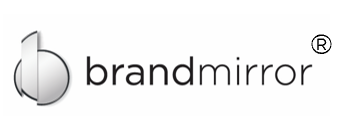Your pitch is a critical test of your business, forcing you to synthesize your value proposition in a clear, concise, and engaging manner. This is the moment where you convince the people holding the purse strings that they would be wise to invest in what you’re selling. Your brand should be infused into every slide in the pitch deck, letting potential investors and other stakeholders truly grasp what you stand for. It can feel impossible to incorporate so much into so little, but here are 5 things that should come across loud and clear.
1. Know Your Story; Know Your Ask
You want your potential investors to hear the pitch and gain confidence that they have enough information to make a decision about working with you. This means your pitch deck needs to include the brand story – what inspired the business, what has impelled growth, and where do you see the business going. Common marketing and sales wisdom holds that the prospect is the “hero” of the story. In a pitch deck, your business is the hero, and the investors are the geniuses who knew to back you. Your ask should invite the investors to join you on your hero’s journey to reap the benefits of your success. By the time you make your ask, your story and your ask should remove the friction from making it happen.
2. Build Your Credibility
Your pitch is an opportunity to showcase the wisdom of investing in your company. In addition to information about the team (including professional headshots), the pitch deck should showcase your market research, identify your unique value proposition, and communicate the financial outlook of the business in a compelling way. When delivering the pitch, you should look the part and align your presence with the company brand as well as show up confidently. This is not the time to get creative with your look – stick to clothing that fits well and makes you comfortable without being sloppy. Speaking of sloppy, every typo in your text and wrinkle in your shirt sends the message that you may not have the necessary attention to detail to succeed. These are easy fixes, which should be made in advance. Remember a first impression is made up of three elements – your look (55%), your tone (38%), and your content (7%).
3. Be Prepared to Cover What Isn’t in the Pitch Deck
Your pitch deck should not include everything under the sun and the kitchen sink. There simply isn’t room or time in a intentional pitch deck to address all the possible questions that might come up. This doesn’t mean that you should not do your work to answer these questions. For example, if you know one of your potential investors has previously worked in a different industry, be prepared to analogize to that industry to clarify your own proposal in terms they can understand. In prepping for a pitch, practice answering questions that might arise from the contents of the deck as well as possible questions out of left field. Think through the data and be able to answer questions and address issues using specific facts and figures. If necessary, have additional slides in the appendix, however, still keep it on point and brief.
4. Know Your Personal Brand Strengths and Play to Them
As the person or team making the pitch, you are on display as much as your business. You have the opportunity to demonstrate your contribution to the value of the business. Are you the visionary? The implementer? The team builder? Make sure your pitch deck and your pitch bring out your unique value. As with your appearance, the pitch is not the time to put on a different persona. Show who you are and speak to the strength this offers the company. Regardless of your role in the company, your role at a pitch is to be confident and clear on the purpose and the players you represent. Many pitch decks include a slide on who is on your team – do you have the right players – such as your Advisory Board or Flash Board, and of course your staff (including strategic partners). Although you are the face of the business, your relationships should also increase trust and credibility in the eyes of your investors.
5. Listen
No person, service or product is above improvement, and the pitch session is your opportunity to show that you are continually striving in that direction. The investors will ask questions, and it’s important that you don’t interrupt, don’t get defensive, and listen to answer the exact question being asked. Be prepared for questions that you don’t know how to answer with humility, engagement, and willingness to follow-up. When you receive advice or feedback, say thank you, and keep any answers short and concise. Do not argue points or BS your way through an answer. If you do not know an answer, then say so, and commit to following up.
Jen Dalton is a personal brand specialist with entrepreneurship in her DNA. Her book, Listen: How To Embrace the Difficult Conversations Life Throws at You, is an insightful guide to navigating tough talks. She helps business owners and executives define how they show up as leaders, make the most of their strengths, and tend to their legacy, growth, and visibility. The author of two books, including The Intentional Entrepreneur, a frequent speaker, podcaster, and “Purpose Sherpa,” Jen is a critical resource for any person or company that wants to define their brand and differentiate themselves in authentic, credible, and relevant ways to the market. brandmirror.com

